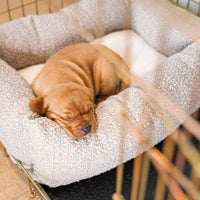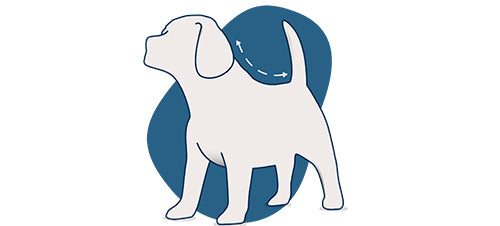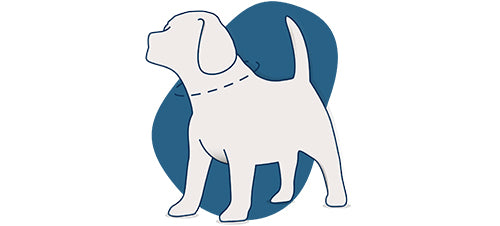In a time when it is easy to become stressed thinking about the Covid-19 situation we find ourselves in, there are positives to be taken from it too. For many of us the extra time we are now spending at home will mean more time with our family and our pets. Working from home may seem like a challenge initially, but having more valuable time with our pets is great in many ways, not least for our mental wellbeing. Here we look at the benefits of working at home with our pets and then take a look at some ideas for your home office set-up.
Positives of Working From Home With Your Pet
-
The number one positive here is our happiness and I think we can all agree that our pets make us happy. Having more time to spend with them means more cuddles, more playtime together and more quality bonding time in general. You may well be working for a big proportion of the day, but being at home means your breaks can be spent with other family members, including your cats, dogs and other family pets.
-
The current situation brings with it many challenges. As the news changes daily, so too, do our daily routines. For most people we are now living a life of isolation from the outside world, so finding ways to lift our mood and stress levels is important. Having a pet is proven to reduce stress levels, so when you feel like your home office is getting a little too much, take 5 minutes out to play with your dog or cat. It’ll be just the break you need!
-
When we’re happier and feel fulfilled we work more effectively. Being at home and around loved ones more may just make you more productive in your work. The ability to take a break when you need it, socialise with your cat or dog and set your own timetable will mean you will probably work harder when you do sit down at your desk.
-
This is the most important isn’t it?! Being able to give Bella or Felix a cuddle whenever you want is nothing but a positive thing. A hug makes us all feel better, especially in times of uncertainty. Having your pet around more, just means extra time for fuss. It’s also a good opportunity to get out for more dog walks. If you’re social isolating at the same time, it might just be a walk and a run for your dog in the garden. If you’re social distancing, we are still allowed a daily exercise, so its the perfect time to get out for a walk - try to do it at quieter times when social distancing is easier. Your daily walk will further decrease stress levels, help your fitness levels and offer valuable bonding time with your dog. If you live with other family members, they will be able to take your dog out on their exercise breaks too - might just give you an hour to yourself for that conference call!
-
Going to work for most of us means some kind of commute. By working at home you’ll be saving time as your desk is merely meters away! This time could be spent doing something much more fun and productive, like grooming Fido or playing fetch in the garden.

Tips for Your Home Office Set-up
If working from home is completely new for you, you might wonder how best to set up your home office. Here we’ve come up with some ideas to help balance your home and work environment including your pets.
-
Find a place for your pet in your work space - whilst it’s important to set boundaries and you don’t want your dog distracting you every five minutes, having them close will be good for you and them. Bringing a bed into your home office is one way of allowing them to be close without sitting on your lap. Choose the place that suits your individual pet - it might be under or by your desk, or it might be in the corner if you have a larger dog.
-
Section off an area of the room if needed - every pet is different, so making the room work for you both is important. Sectioning off a corner of your home office with a puppy pen for instance, might just be the best solution for you and your dog. This way they can see you and have your company, whilst still giving you your work space.
-
Provide your dog with toys - Making sure they have things to keep them occupied whilst your working is important. The last thing you want is for boredom to set in. A couple of toys in and around their bed will hopefully give them something to do during working hours.
Just remember, there are no hard and fast rules in this situation. It’s all about adapting your home environment to work for you and your family. We’d love to hear how you’ve set up your home office. How did you set up your office and how do you manage to balance work with time with your pets?








































































































